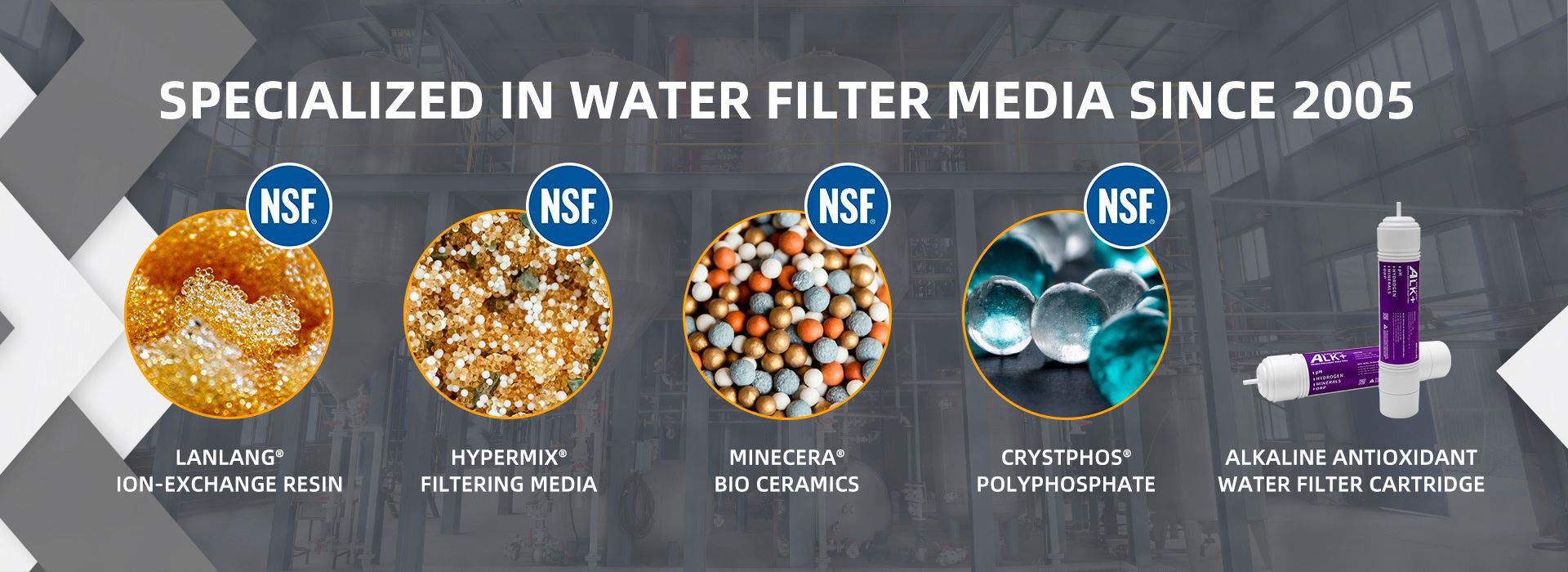Ion exchange resins can also be divided into styrene resins and acrylic resins according to the type of their matrix. The types of chemically active groups in the resin determine the primary properties and types of the resin. First divided into cationic resin and anionic resin two categories, they can respectively with the cation and anion in the solution to carry out ion exchange. Cationic resin is divided into strong acid and weak acid two categories, anion resin is divided into strong basic and weak basic two categories.
Ion exchange resin (ionresin) matrix, the production of raw materials are mainly styrene and acrylic acid (ester) two categories, they will produce polymerization reaction with the crosslinking agent diethylbenzene, forming a polymer with a long molecular main chain and cross-linked cross chain network skeleton structure. Styrene-based resins are used first, and acrylic resins are used later.
The adsorption properties of these two types of resins are very good, but they have different characteristics. Acrylic resin can exchange and adsorb most ionic pigments, the decolorization capacity is large, and the adsorption is easy to elution, easy to regenerate, in the sugar factory can be used as the primary decolorization resin. Styrene resins are good at absorbing aromatic substances, and are good at absorbing polyphenolic pigments in sugar juice (including negatively charged or uncharged); However, it is difficult to eluate during regeneration. Therefore, the sugar solution is first used for crude decolorization with acrylic resin, and then used for fine decolorization with styrene resin, which can make full use of the advantages of both.
The crosslinking degree of the resin, that is, the percentage of divinylbenzene used in the polymerization of the resin matrix, has a great influence on the properties of the resin. Generally, the resin with high crosslinking degree is more tightly polymerized, fast and durable, has higher density, less internal voids, and is more selective to ions. The resin with low crosslinking degree has larger pores, stronger decolorization ability and faster reaction speed, but its expansibility is larger at work, its mechanical strength is slightly lower, and it is more brittle and fragile. The cross-linking degree of ionic resins for industrial applications is generally not less than 4%; The crosslinking degree of the resin used for decolorization is generally not higher than 8%; The crosslinking degree of resins used solely for adsorption of inorganic ions can be higher.
In addition to the above two series of styrene and acrylic acid, ion exchange resins can also be polymerized from other organic monomers. Such as phenolic (FP), epoxy (EPA), vinyl pyridine (VP), urea aldehyde (UA) and so on.


